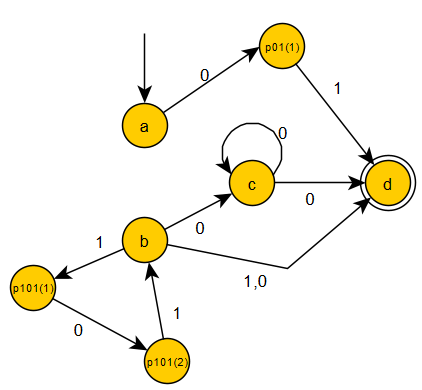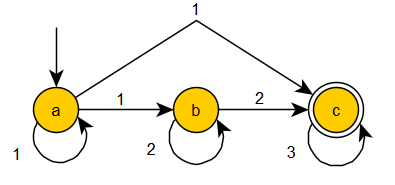(related to Chapter: Finite Automata (Finite Sequential Machines))
The following are examples to apply the construction given in the proof of the theorem about the reduction of $\epsilon$-NFA to NFA, reducing the examples of $\epsilon$-NFA to the corresponding NFA.

Please note that in this example, the intermediate states $p_{01}(1), p_{101}(1)$ and $p_{101}(2)$ have been added to reflect transitions marked by words with length $\ge 2$ in the original graph of the second $\epsilon$-NFA example. Also, the original $\epsilon$ transition from the state $a$ to the state $b$ disappeared, since there is no predecessor state $t$ and symbol $x\in\{0,1\}$ such that $\Delta^\prime(t,x)=a.$

In this example, no new intermediate states are needed to reduce the original $\epsilon$-NFA to an NFA. However, we have to deal with the original $\epsilon$ transitions between the states $a\to b$ and $b\to c$ and replace them according to the construction in the proofproof/. The construction steps are as follows: